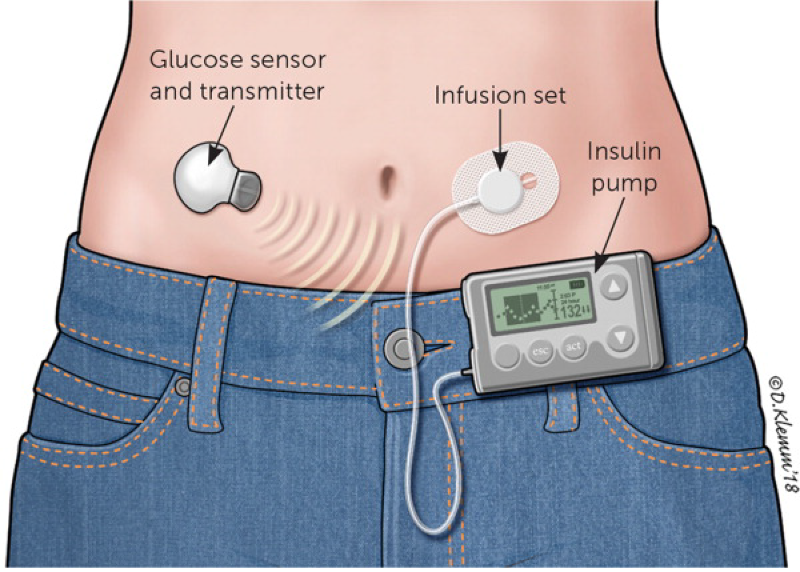The Deadliness of Diabetes
- Sia Mahajan
- Feb 1, 2021
- 4 min read
Without energy, there is no life. People with diabetes stare death in the face everyday all because of one little hormone: insulin. Although there are multiple types of diabetes, the main ones being discussed are Diabetes Mellitus (type 1) and Diabetes Mellitus (type 2).

Look at the structure and chemical composition of insulin. Notice the long amino acid chain to make the hormone, along with the chemical groups attached to the ends.
Diabetes is a condition where the body is unable to properly convert food into energy. Most of the food is turned into glucose, or sugar, which gets broken down into usable energy called ATP. The pancreas, an organ that lies close to the stomach, makes a hormone called insulin to allow glucose to enter the cells. With diabetes, the body either does not make enough insulin or can not use insulin correctly, which causes a build up of sugars up in the bloodstream.

Normal cell, insulin, and glucose interaction. If insulin does not work properly in diabetic people, how does this interaction change?

Diabetes is highly damaging to the body, as sugar crystals are floating around, and it causes the characteristic symptoms and risks of diabetes. Although the only accurate way to know if you have diabetes is to consult with a physician, common symptoms are frequent urination, excessive thirst, random weight loss or gain, intense hunger, blurry vision or any vision changes, tingling or numbness in hands or feet, fatigue, very dry and rough skin, frequent illnesses, and lengthen healing time for sores. In more severe cases, health complications can arise, some of which include heart disease, blindness, kidney failure, etc. Due to the severity of these health risks, diabetes is the nation’s seventh leading cause of death.
With type 1 diabetes, sometimes called juvenile or insulin-dependent diabetes, the pancreas is unable to produce insulin or it produces miniscule amounts of it. This type is thought to be an autoimmune disease where beta cells — the cells in the pancreas that make insulin— are destroyed. An oversimplified explanation of autoimmune diseases is that it causes the body's immune system to harm healthy cells, and in the case of diabetes, white blood cells attack the healthy and helpful beta cells because they are seen as pathogens. Juvenile diabetes can also be genetically passed down. Some people have certain genes (traits passed on from parent to child) that make them more likely to develop type 1 diabetes.


People with type 1 diabetes must take insulin every day, as their bodies do not make it. It can either be taken with an injection or a pump. The pump injects insulin through a port in the skin, which can be easier for some people than sticking themselves with a needle. People with type 1 diabetes regularly test their blood sugar to figure out how much insulin they need, as the amount needed varies. Several insulin types exist, so consult with a doctor to find which one works best for you. Another medication, Metformin, can be taken because some people with type 1 diabetes can develop insulin resistance. This means that the insulin they get from injections or pumps is ineffective; once again the cells can not use the glucose in the blood. Metformin helps lower sugar in the blood by reducing sugar production in the liver.
Unlike type 1 diabetes, people with type 2 diabetes can produce insulin, but their cells don’t respond normally to insulin. In response, the pancreas generates more insulin to try to get cells to respond. Eventually the pancreas can’t keep up, and blood sugar rises, setting the stage for prediabetes and type 2 diabetes. Due to the overabundance of insulin, their cells have become insulin resistant. Once again glucose stays in the bloodstream, causing high blood sugar.

Type 2 diabetes exhibits similar symptoms and fatal health conditions as type 1, but unlike type 1, type 2 can be prevented. Although some cases are genetically passed down, obesity and an inactive lifestyle are the most common causes of type 2 diabetes. Some preventative measures adults and children can take are drinking more water and fewer sugary drinks, eating more fruits and vegetables, making foods more balanced, and incorporating physical activity into everyday life. People diagnosed with type 2 diabetes have to manage it similar to those with type 1. Doctors may prescribe insulin, other injectable medications, or oral diabetes medicines to help manage blood sugar and avoid complications. It is important to note that an active and healthy lifestyle should be maintained, even though medication is being taken. People who struggle with diabetes need to check their blood sugar regularly. Ask a physician how often it should be checked and what the target blood sugar levels should be. Keeping your blood sugar levels as close to target as possible will help prevent or delay diabetes-related complications.

Both types of diabetes can be tested for with a blood sample. Contact your doctor and ask for a hemoglobin A1C panel. This test measures your average blood sugar levels over the past 3 months by calculating the percentage of red blood cells that have sugar-coated hemoglobin. This is one of the commonly used tests to diagnose prediabetes and diabetes, because higher A1C levels are linked to diabetes and diabetic complications. Thanks to modern medicine and technology, people who struggle with diabetes can now live an almost normal life.

People with diabetes and high blood sugar are likely to have red blood cells that look like the image on the right, while people with normal sugar levels make the red blood cells look like the image on the left.




Commentaires